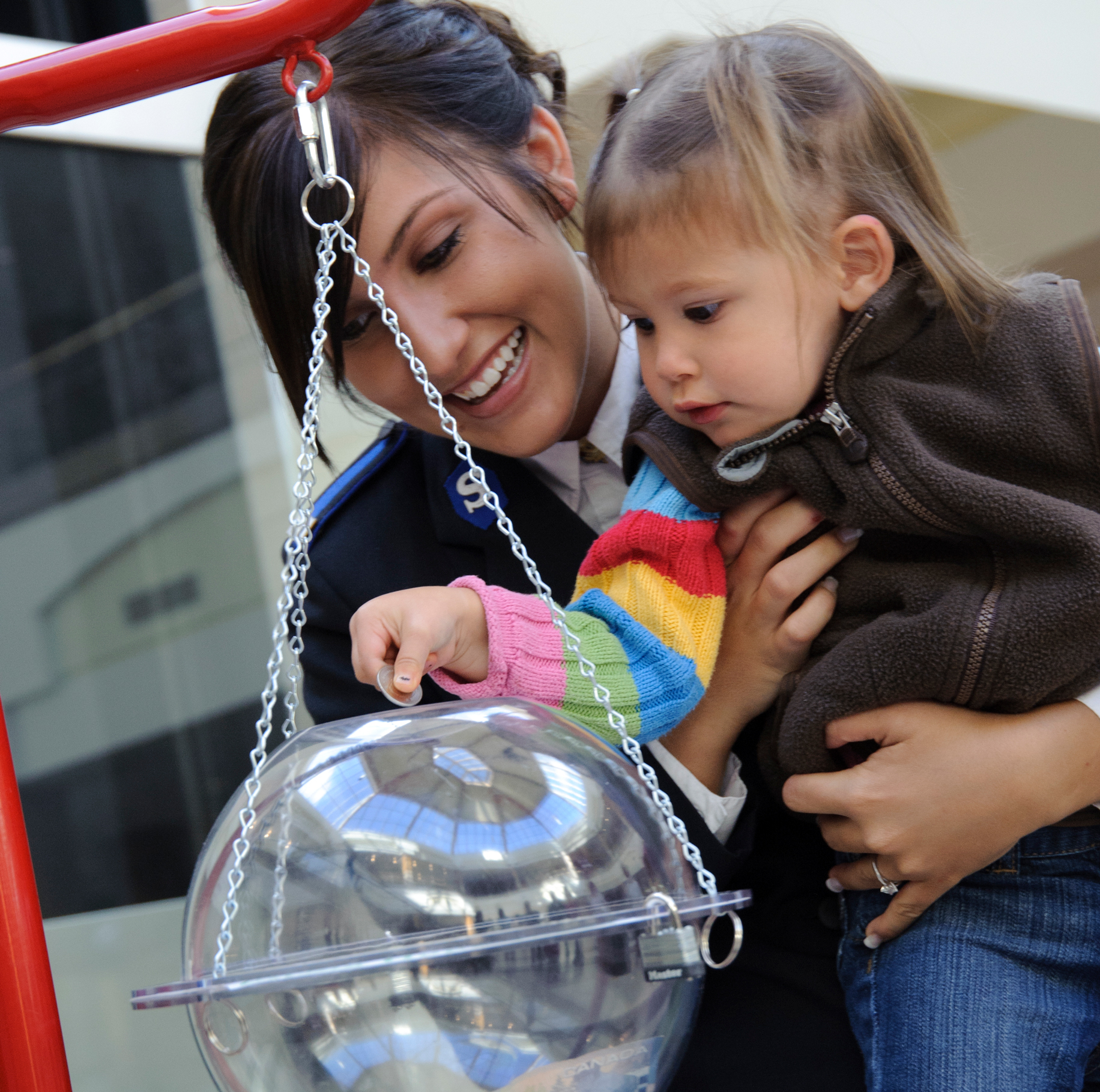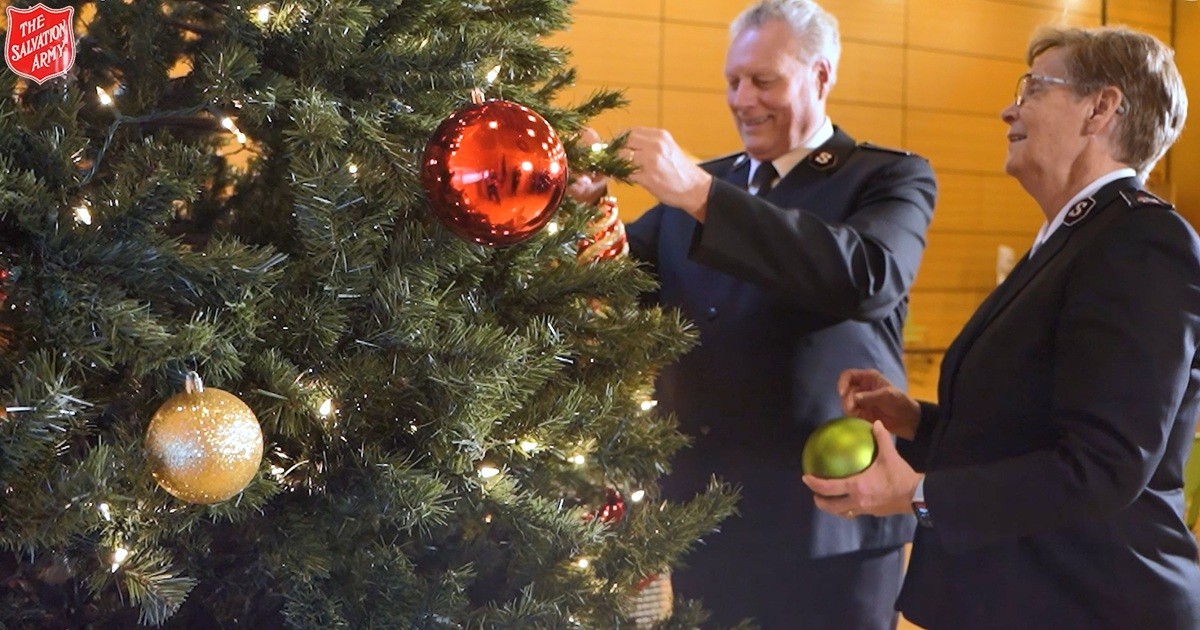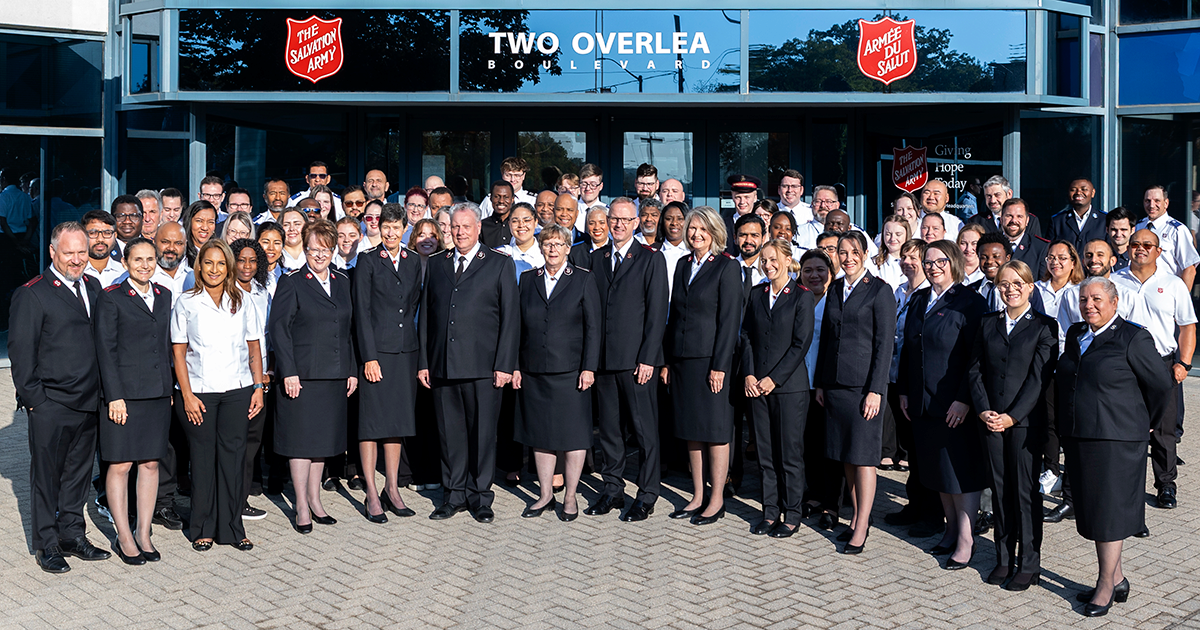Thanks to contributions from donors, volunteers and community partners, The Salvation Army raised $22-million during its 124th annual Christmas Kettle Campaign. Donations to the campaign will remain in the local communities in which they were raised and will help The Salvation Army in the fight against poverty throughout Canada.
“We are truly touched by the generosity of our neighbours, peers and corporate partners, year after year,” says Commissioner Susan McMillan, territorial commander. “Their continued support allows us to fulfil our mission to help people in need and moves us one step closer to putting an end to poverty in Canada through the provision of life-changing services.”
The Christmas Kettle Campaign is The Salvation Army's annual fundraiser, and the largest charitable effort of the year for the Army. Keeping donations local ensures that ministry units have the ability to help people in need with basic necessities such as food, clothing, shelter and other provisions. Donations also enable the Army to help people find a way out of poverty through programs such as substance abuse recovery, job and skills training, and educational courses.
The Salvation Army's success during this year's Christmas Kettle Campaign is due in part to its corporate supporters, which included:
“Without our corporate supporters, The Salvation Army's Christmas Kettle Campaign would not be successful,” says Commissioner McMillan. “Their support allows us to raise awareness of our efforts to provide essential services to vulnerable people and provides a convenient way for their generous customers to donate to our work.”
The Salvation Army has provided hope and dignity to millions of Canadians for more than 130 years through the generosity of donors and volunteers. Christmas Kettles are hosted at more than 2,000 locations across Canada, and thousands of kettle workers volunteer their time to staff each kettle. The 2014 Christmas Kettle Campaign ran from November 17 to December 24, 2014.
“We are truly touched by the generosity of our neighbours, peers and corporate partners, year after year,” says Commissioner Susan McMillan, territorial commander. “Their continued support allows us to fulfil our mission to help people in need and moves us one step closer to putting an end to poverty in Canada through the provision of life-changing services.”
The Christmas Kettle Campaign is The Salvation Army's annual fundraiser, and the largest charitable effort of the year for the Army. Keeping donations local ensures that ministry units have the ability to help people in need with basic necessities such as food, clothing, shelter and other provisions. Donations also enable the Army to help people find a way out of poverty through programs such as substance abuse recovery, job and skills training, and educational courses.
The Salvation Army's success during this year's Christmas Kettle Campaign is due in part to its corporate supporters, which included:
- Great-West Life, London Life and Canada Life donated $50,000 to The Salvation Army in November to launch the Christmas Kettle Campaign.
- Walmart Canada partnered with The Salvation Army for “Walmart Fill the Kettle Day” on Saturday, December 20, matching contributions made to Salvation Army Christmas Kettles in its stores up to a maximum donation of $50,000.
- Other corporate partners that helped The Salvation Army by hosting Christmas Kettles included Loblaw Companies Limited, Costco, BC Liquor Stores, LCBO (in Ontario), Canadian Tire, Cadillac Fairview, Metro, Safeway, Save-on-foods, Sobeys and more.
“Without our corporate supporters, The Salvation Army's Christmas Kettle Campaign would not be successful,” says Commissioner McMillan. “Their support allows us to raise awareness of our efforts to provide essential services to vulnerable people and provides a convenient way for their generous customers to donate to our work.”
The Salvation Army has provided hope and dignity to millions of Canadians for more than 130 years through the generosity of donors and volunteers. Christmas Kettles are hosted at more than 2,000 locations across Canada, and thousands of kettle workers volunteer their time to staff each kettle. The 2014 Christmas Kettle Campaign ran from November 17 to December 24, 2014.










In recent years, I have noticed in Christmas kettle promotional material, even in Canadian periodicals, the narrative refers to that initial “kettle” or “pot” event taking place on the west coast of the United States, not Canada's east coast. I can't help but ask, if the former were the case, why would Abbie, an American, claim the event took place in Canada?
By the way, Major Miller was writing to the columnist to clarify another important fact. Well, it was an important fact then. Wrote the Major: “Our kettles have always been manned by a man or woman wearing the uniform of The Salvation Army, NEVER a Santa Claus suit.”
Obviously Salvation Army policy has changed radically since that letter was written fifty years ago. One is more likely to see any kind of dress, other than the Army uniform, beside the Army kettle. While it is good to have friends, it is another thing to abdicate our own responsibility. One would hope the change from blue uniforms to no uniforms—or jolly red uniforms—is not because the modern-day office worker and Santa Claus are more devoted to the Army's ministry than the modern-day Salvationist.
Ira Barrow
Major
Manuals, NL